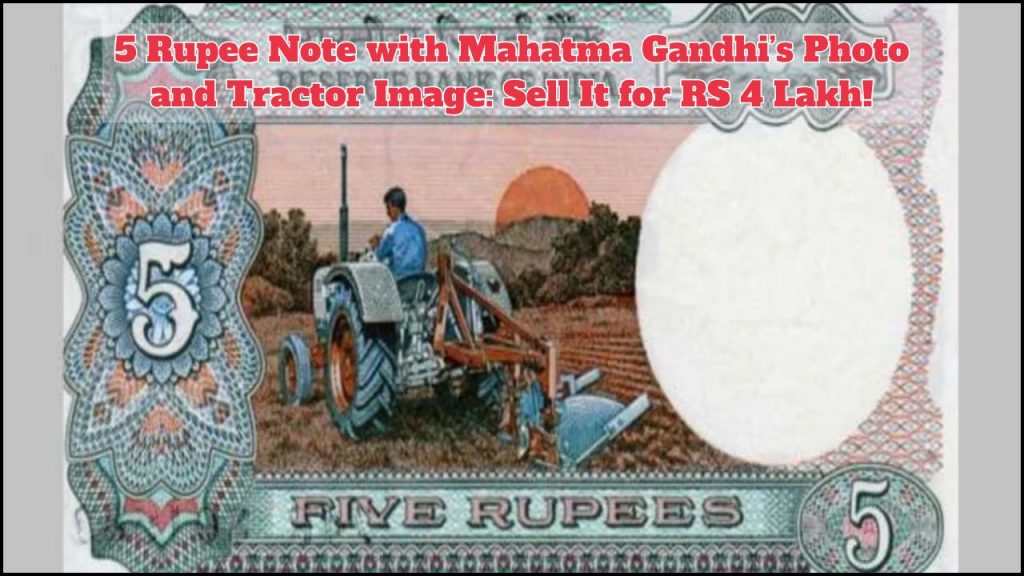
In recent years, the collector’s market for rare Indian currency has gained significant attention, with claims of ordinary-looking currency notes fetching extraordinary prices. Among these, the humble 5-rupee note has become the subject of particular interest. Stories circulating online suggest that specific 5-rupee notes bearing Mahatma Gandhi’s portrait, a tractor image, and certain serial numbers can sell for lakhs of rupees. This article examines the reality behind these claims, offers guidance on identifying potentially valuable notes, and provides important cautions about marketplace authenticity.
What Makes a 5 Rupee Note Potentially Valuable?
Currency collectors, known as numismatists, value certain notes based on specific characteristics that make them rare or unique. For Indian 5-rupee notes, several factors may contribute to their potential value:
Serial Number Significance
The serial number printed on a currency note can significantly impact its collector value. Notes with special serial numbers are often sought after by collectors who attach meaning to certain numerical patterns:
- Notes with 786 sequence: In Islamic tradition, the number 786 is considered auspicious, representing the numerical value of the phrase “Bismillah al-Rahman al-Rahim” (In the name of God, the Most Gracious, the Most Merciful). Notes featuring this sequence anywhere in their serial number may attract premium prices from collectors.
- Notes with solid numbers: Serial numbers consisting of a single repeating digit (like 111111 or 999999) are extremely rare and highly prized.
- Notes with fancy patterns: Serial numbers with interesting sequences like 123456 or 876543 can command higher prices.
Design Features
The design elements on a 5-rupee note can also increase its collector value:
- Mahatma Gandhi portrait: While most modern Indian currency features Gandhi’s portrait, specific printing variations or errors in this depiction might add value.
- Tractor imagery: Notes featuring a farmer on a tractor with a tiller (representing India’s agricultural heritage) are said to be particularly valuable, especially from older series that are no longer in wide circulation.
Condition Factors
The physical condition of the note plays a crucial role in determining its value:
- Uncirculated condition: Notes that have never been in circulation and remain crisp and pristine command the highest prices.
- Error notes: Notes with printing errors, misalignments, or other manufacturing defects can be highly sought after by specialized collectors.
Reality Check: Market Prices for Rare 5 Rupee Notes
While online claims suggest that certain 5-rupee notes can sell for ₹1-4 lakhs, the reality of the collectors’ market requires a more nuanced understanding. Here’s what actual market data indicates:
| Type of 5 Rupee Note | Claimed Value Online | Realistic Market Value* | Rarity Level |
|---|---|---|---|
| Standard 786 serial number | ₹1-4 lakhs | ₹100-5,000 | Uncommon |
| Full 786 serial number (786786) | Not specified | ₹5,000-25,000 | Very Rare |
| Tractor note with 786 serial number | ₹4 lakhs | ₹1,000-10,000 | Rare |
| Error notes (printing defects) | Varies | ₹500-50,000 | Varies |
| Commemorative editions | Not specified | ₹200-20,000 | Limited |
*Realistic market values based on verified auction data and professional numismatist assessments as of 2025
Understanding the Legitimate Collector’s Market
The legitimate market for rare currency functions through established channels with proper verification processes. Here’s how the authentic collector’s market operates:
Reputable Marketplaces for Currency Collectors
Serious collectors typically engage with established platforms and communities:
- Professional numismatic auctions: Companies like Todywalla Auctions, Baldwin’s, and Spink conduct regular auctions with expert authentication.
- Registered collector associations: Organizations like the Numismatic Society of India provide guidance and sometimes facilitate exchanges between collectors.
- Specialized dealers: Licensed currency dealers with established reputations offer authentication services and fair market valuations.
Authentication Process
Legitimate selling of valuable currency notes involves proper authentication:
- Expert examination: Professional numismatists examine the note for authenticity, considering paper quality, printing techniques, and security features.
- Documentation: Proper documentation of provenance (history of ownership) adds credibility and value.
- Grading standards: Notes are graded according to internationally recognized standards that assess their condition objectively.
Warning Signs of Fraudulent Schemes
The significant gap between claimed values online and realistic market prices creates opportunities for scams. Here are warning signs to watch for:
- Upfront fees: Legitimate buyers don’t require sellers to pay registration fees, “authentication charges,” or other upfront payments.
- Promises of extraordinary returns: Claims that common notes can sell for lakhs of rupees should be viewed with extreme skepticism.
- Pressure tactics: Urgency to “sell now before prices drop” is typically a manipulation technique.
- Lack of physical inspection: Reputable buyers want to physically examine valuable notes before purchase.
- Requests for personal financial information: Be wary of requests for bank account details or other sensitive information early in discussions.
How to Determine If Your Note Has Genuine Value?
If you believe you possess a potentially valuable 5-rupee note, consider these steps:
- Research independently: Consult multiple reputable sources rather than relying on viral social media claims.
- Seek professional assessment: Contact established numismatic associations or dealers for evaluation.
- Document your note: Take clear, high-resolution photographs of both sides of the note, including serial numbers.
- Compare with verified sales: Look for documented sales of similar notes through reputable auction houses.
- Be realistic about value: Understand that even if your note has some collector value, it’s likely to be in the hundreds or thousands of rupees range rather than lakhs.
The Cultural Significance of Number 786
The number 786 carries particular significance in South Asian currency collecting due to its cultural importance:
In Islamic numerology, 786 represents the Bismillah phrase, making it auspicious for many Muslims. This cultural significance creates genuine demand for notes bearing this number, though at much more modest prices than online claims suggest.
Similarly, other numbers may hold significance in different cultural contexts:
- 108 in Hindu and Buddhist traditions
- 888 in Chinese culture represents prosperity
- 9 in many South Asian traditions, symbolizing completion
Moving Ahead: Approach with Caution and Knowledge
While the collector’s market for rare Indian currency is legitimate and active, claims of 5-rupee notes selling for lakhs should be approached with healthy skepticism. The true value of rare notes typically ranges from a small premium to several thousand rupees for genuinely rare specimens in excellent condition.
If you’re interested in currency collecting, approach it as an educational hobby rather than a get-rich-quick opportunity. Engage with established collector communities, learn about authentication methods, and develop an appreciation for the historical and artistic aspects of currency.
Remember that legitimate buyers never require sellers to pay upfront fees, and extraordinary value claims should always be verified through multiple reputable sources. By approaching the market with knowledge and caution, you can avoid potential scams while potentially discovering the genuine, if more modest value of your currency collection.
Additional Resources
For those interested in learning more about numismatics and currency collecting in India, consider exploring these resources:
- The Numismatic Society of India (NSI)
- Reserve Bank of India’s Currency Museum
- Established auction houses with numismatic departments
- Educational resources on currency authentication and grading
By approaching currency collecting with education and realistic expectations, it can become a rewarding hobby that combines history, art appreciation, and the occasional modest financial return.

Katherine Johnson is a passionate writer with a keen interest in storytelling, content creation, and creative expression. She enjoys exploring diverse topics and crafting engaging narratives that captivate readers.



